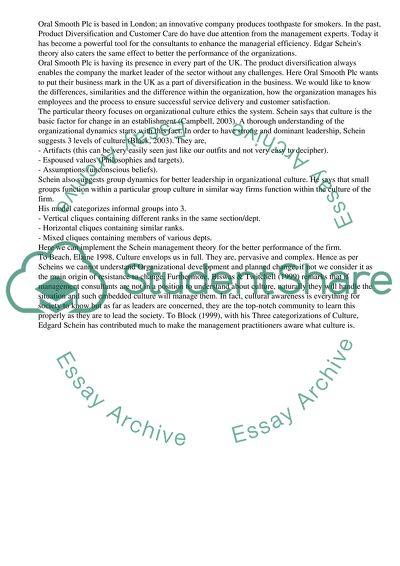Cite this document
(Organizational Culture of the Company through Edgar Schein's Theory Research Paper, n.d.)
Organizational Culture of the Company through Edgar Schein's Theory Research Paper. Retrieved from https://studentshare.org/management/1747778-a-2500-word-report-on-the-organisational-culture-of-xyz-company-using-edgar-schiens-theory
Organizational Culture of the Company through Edgar Schein's Theory Research Paper. Retrieved from https://studentshare.org/management/1747778-a-2500-word-report-on-the-organisational-culture-of-xyz-company-using-edgar-schiens-theory
(Organizational Culture of the Company through Edgar Schein'S Theory Research Paper)
Organizational Culture of the Company through Edgar Schein'S Theory Research Paper. https://studentshare.org/management/1747778-a-2500-word-report-on-the-organisational-culture-of-xyz-company-using-edgar-schiens-theory.
Organizational Culture of the Company through Edgar Schein'S Theory Research Paper. https://studentshare.org/management/1747778-a-2500-word-report-on-the-organisational-culture-of-xyz-company-using-edgar-schiens-theory.
“Organizational Culture of the Company through Edgar Schein'S Theory Research Paper”, n.d. https://studentshare.org/management/1747778-a-2500-word-report-on-the-organisational-culture-of-xyz-company-using-edgar-schiens-theory.


